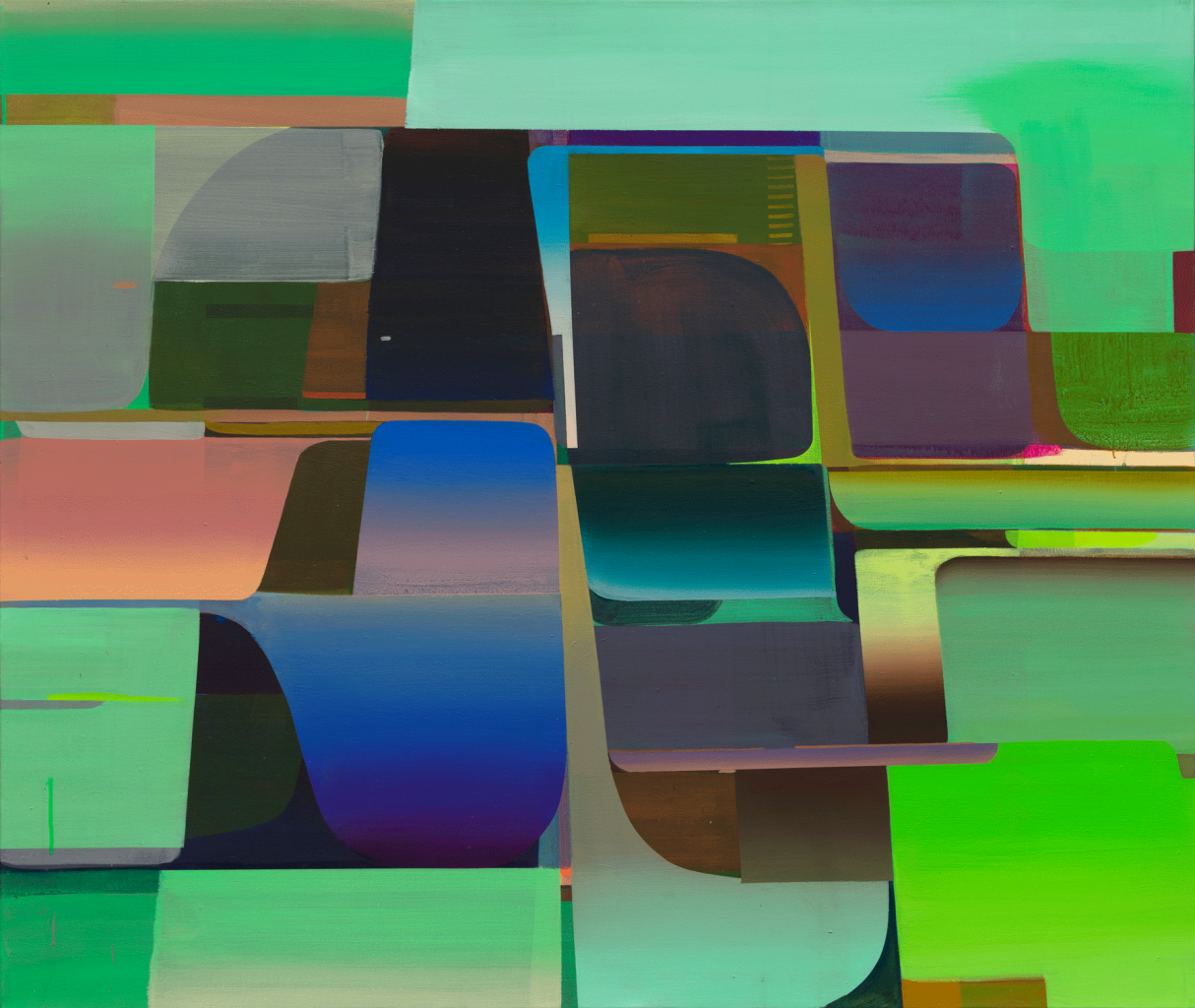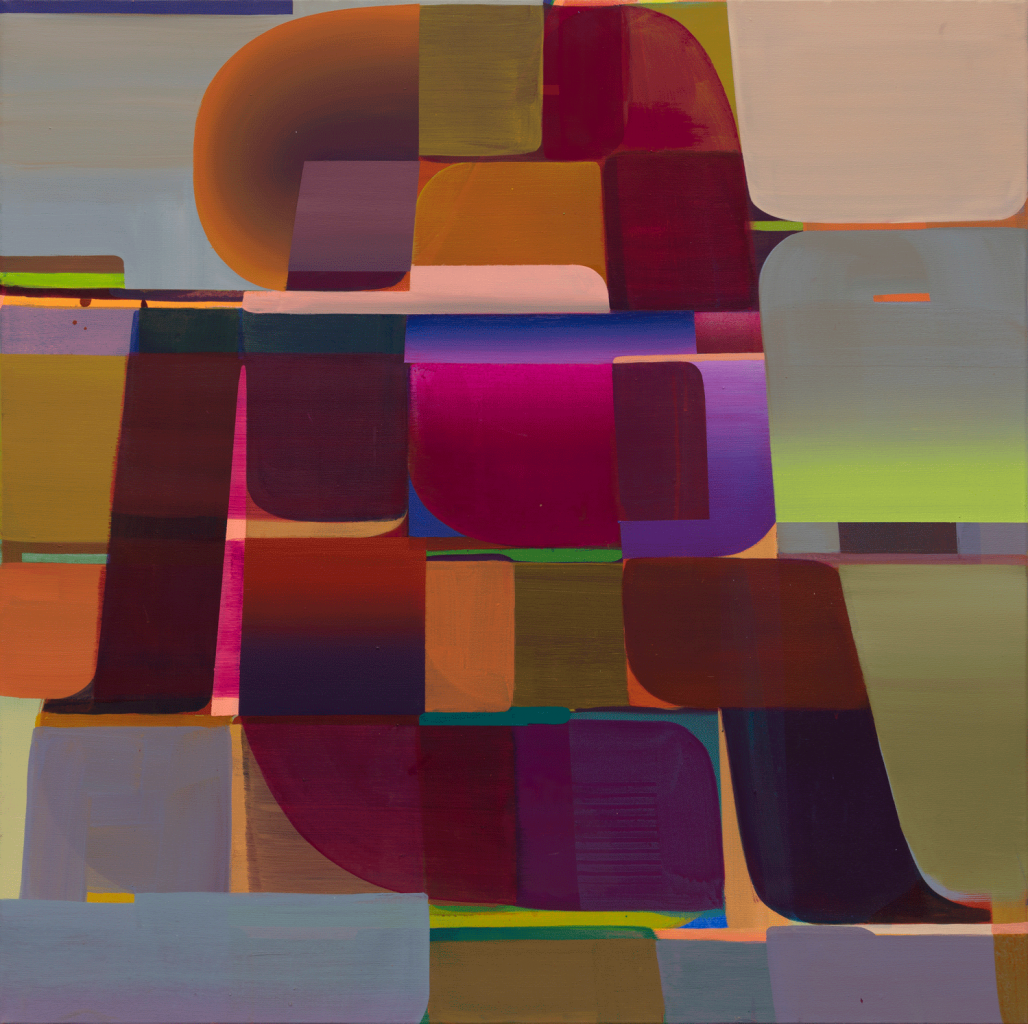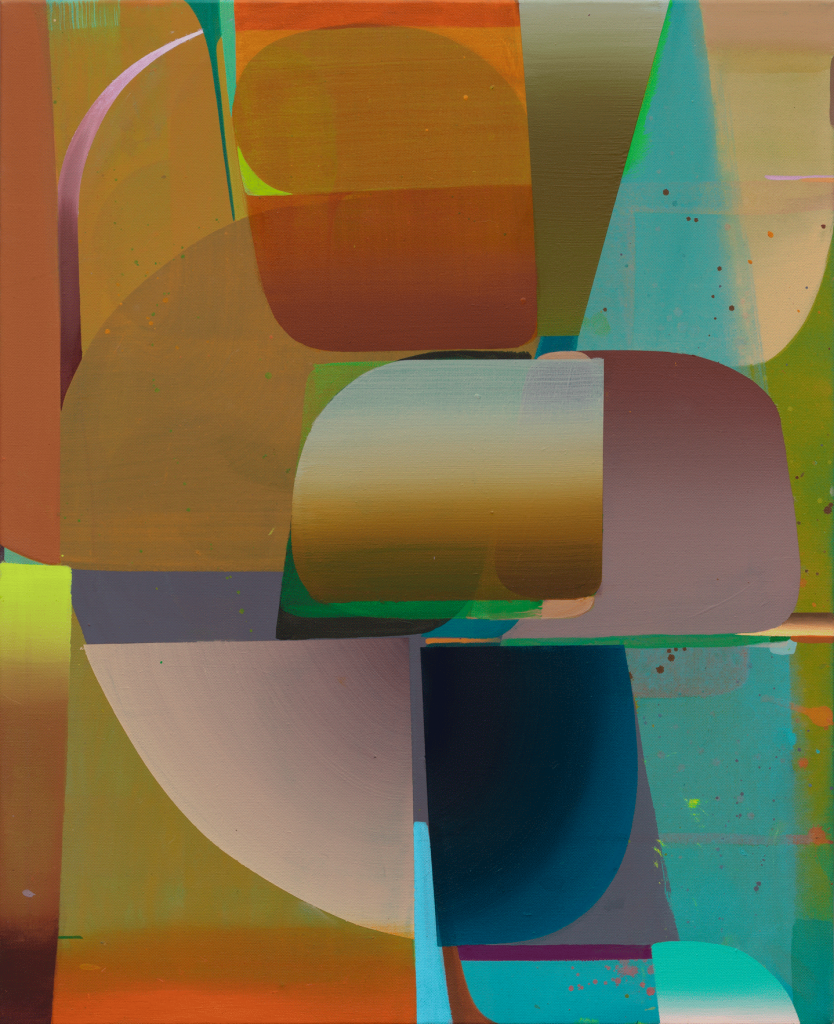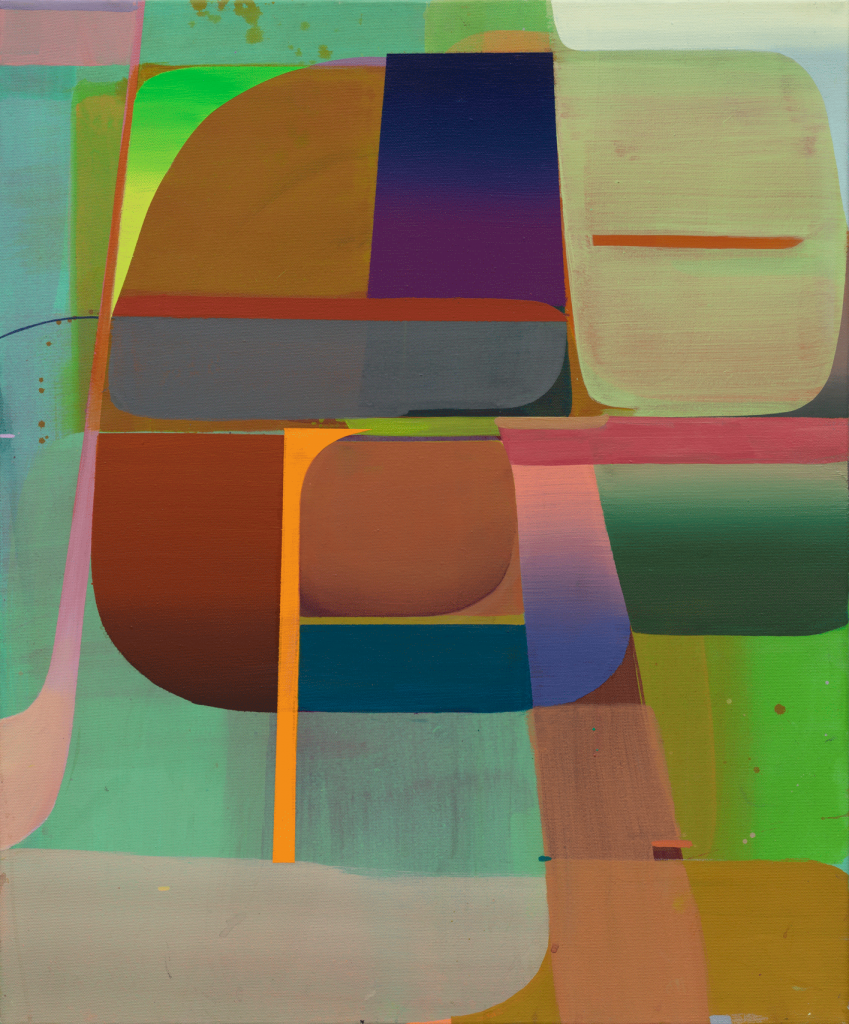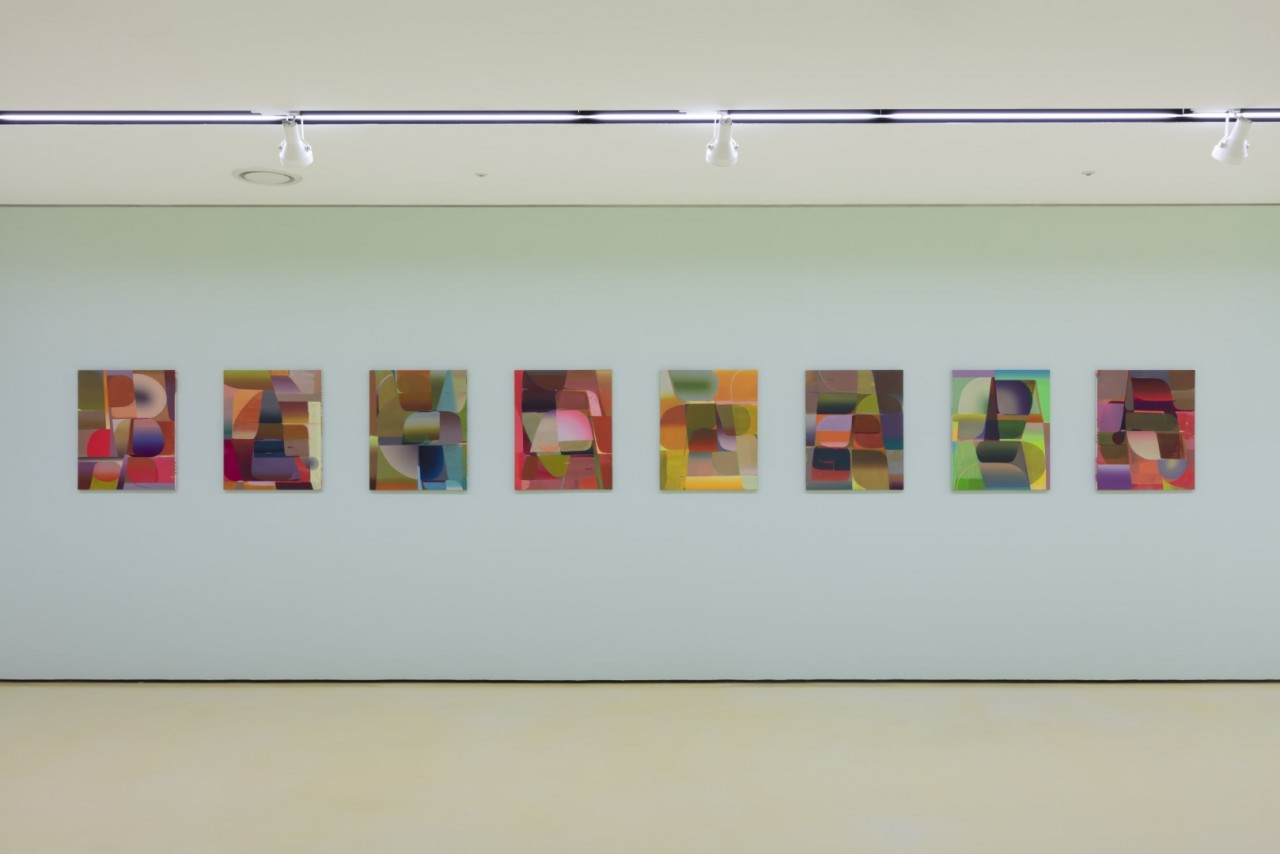Exhibitions

PERIGEE ARTIST #21 성낙희
Modulate
2020.03.05. THU ~
2020.05.09. SAT
<충만한 ZERO>
신승오(페리지갤러리 디렉터)
성낙희는 지속적으로 회화의 가장 기본이 되는 요소인 점, 선, 면을 사용하여 화면 안에서 음악적 리듬과 운율을 만들어내거나 때론 유기체적으로 미끄러지듯이 자유롭게 유영하는 색의 운동감이나 형태들을 보여주어 왔다. 그러나 최근에는 이전과는 다르게 큰 색면이 전면에 두드러지게 나타나는 작업들을 새롭게 선보이고 있다. 그렇다면 이러한 변화에서 우리는 무엇을 읽어 낼 수 있을까?
이전의 작업들은 전시타이틀이나 작품의 제목들에 음악적 용어를 사용하는 것에서도 알 수 있듯이 다양한 재료와 자유로운 붓질 등을 통해서 자신만의 연주법을 획득해 나가는 데에 진력해 왔다. 그의 작업 과정은 하나의 상반되는 부분들이 불균형한 상황이 되면, 그 부족한 부분을 비워진 곳에 의도적으로 차지하게 만들어 화면을 구축해나가는 방식이었다. 따라서 그의 작업은 표면적으로는 직관적인 표현법으로 보이지만 무의식 속에서도 의식적으로 자신의 의도를 담아 화면 안에서 붓이 인도하는 대로 내맡기고 있다. 이는 찰나적으로 선택이 이루어지기에 변주가 심하고 서로 상이한 요소들이 뒤엉켜 하나하나의 요소가 서로 팽팽하게 밀고 당겨져 있는 긴장감으로 가득한 사건의 현장처럼 나타난다. 하지만 작가가 의식하는 선택이라는 명확한 구조로 인해 사실상 엉뚱하고 생경한 길로 빠지지는 않는다. 그러나 이번 전시에서 선보이는 《Sequence》 연작에서는 이러한 기존의 방식과....
<Charged Zero>
Seung Oh Shin(Director of Perigee Gallery)
Nakhee Sung has continued to bring about musical rhythms and cadences using the most fundamental elements of painting, points, lines, and planes and has demonstrated a sense of movement begot by organically gliding and freely flowing hues. Lately, however, unlike in her previous pieces, Sung has been displaying works which feature prominent wide color fields. What can be interpreted from such a shift?
As we can surmise from her use of musical terms for her exhibition title and the names of her works, Sung has done her utmost to attain her own distinctive idioms through a wide variety of materials and unrestricted brushwork. Her work relies on a method of creating a scene by intentionally filling empty spaces when contrasting parts are in an unbalanced state. As a result, her work seems to depend ostensibly on intuitive expression, but she resigns herself to following where her brush leads, consciously putting forth her intentions, even in her unconsciousness. As her choices are instantly made, variations often take place. Her works appear as scene....
신승오(페리지갤러리 디렉터)
성낙희는 지속적으로 회화의 가장 기본이 되는 요소인 점, 선, 면을 사용하여 화면 안에서 음악적 리듬과 운율을 만들어내거나 때론 유기체적으로 미끄러지듯이 자유롭게 유영하는 색의 운동감이나 형태들을 보여주어 왔다. 그러나 최근에는 이전과는 다르게 큰 색면이 전면에 두드러지게 나타나는 작업들을 새롭게 선보이고 있다. 그렇다면 이러한 변화에서 우리는 무엇을 읽어 낼 수 있을까?
이전의 작업들은 전시타이틀이나 작품의 제목들에 음악적 용어를 사용하는 것에서도 알 수 있듯이 다양한 재료와 자유로운 붓질 등을 통해서 자신만의 연주법을 획득해 나가는 데에 진력해 왔다. 그의 작업 과정은 하나의 상반되는 부분들이 불균형한 상황이 되면, 그 부족한 부분을 비워진 곳에 의도적으로 차지하게 만들어 화면을 구축해나가는 방식이었다. 따라서 그의 작업은 표면적으로는 직관적인 표현법으로 보이지만 무의식 속에서도 의식적으로 자신의 의도를 담아 화면 안에서 붓이 인도하는 대로 내맡기고 있다. 이는 찰나적으로 선택이 이루어지기에 변주가 심하고 서로 상이한 요소들이 뒤엉켜 하나하나의 요소가 서로 팽팽하게 밀고 당겨져 있는 긴장감으로 가득한 사건의 현장처럼 나타난다. 하지만 작가가 의식하는 선택이라는 명확한 구조로 인해 사실상 엉뚱하고 생경한 길로 빠지지는 않는다. 그러나 이번 전시에서 선보이는 《Sequence》 연작에서는 이러한 기존의 방식과는 다른 모습을 보여준다. 과거의 작업들이 역동적이고 톡 쏘는 맛과 같은 자극적인 감각의 즐거움을 주고, 우리는 이를 작가의 호흡에 맞춰 따라가는 형국이었다면, 이번 작업은 차분하고 정적이어서 운동감 보다는 공간감에 대한 인상을 먼저 받는다. 이러한 새로운 방식에 대한 연구는 2018년에 보여준 《Transpose》 연작에서 시작되었다고 볼 수 있는데, 조를 옮긴다는 혹은 바꾼다는 제목의 의미는 기존 상황을 바탕으로 하는 변주가 아니라 새로운 장을 열기 위한 큰 변화를 작가가 모색했다는 것을 유추하게 한다. 이번 전시의 타이틀인 《Modulate》도 이를 계속해서 실험하고 있음을 충분히 인지할 수 있다. 제목 이외에 실제적인 도구의 교체도 큰 변화다. 이전까지의 붓보다는 넓은 붓을 사용하여 시원스럽게 사용하는 것, 이전과 비교하여 작은 캔버스를 사용하는 것도 변화를 인지하게 만드는 요소이다.
이제는 본격적으로 《Sequence》 연작을 자세히 살펴보자. 이 작품들은 사실 기존의 작업을 확대한 것처럼 보이며, 여러 색면이 차곡차곡 쌓여가면서 기하학적으로 연결되어 있는 매끄러운 형태로 디지털 픽셀과 같이 나타난다. 그러나 자세히 보면 색면은 붓질의 흔적을 고스란히 담고 있다. 또한 여러 층위로 분할되어 면들은 그 밑으로 표면에 스며든 것처럼 여러 겹의 중첩된 모습이다. 그의 붓질들은 직선과 곡선이 결합된 모습이며, 수직과 수평으로 사선으로 화면을 분할 하면서도 곡선으로 굴절되면서 무엇인가 계속해서 흘러내리는 것처럼 유동적인 장면을 연출한다. 또한 캔버스의 둘레로 흘러내린 색의 흔적들도 수없이 했지만 감춰진 미묘한 화면구성을 감지할 수 있게 해준다. 따라서 이러한 화면들은 조용한 기차의 실내에서 창을 통해 지나가는 풍경들이 끊임없이 위아래 좌우로 오르내리며 뒤로 미끄러지는 것 같은 운동감과 공간감을 내재하고 있다. 그가 이러한 변화를 통해 선택한 것들을 무엇인가? 겹겹이 포개진 색면과 붓질은 억제와 자유롭게 풀려남을 나란히 병치해 놓고 있다. 이전의 작업들이 구성하지 않은 듯한 구성으로 무엇인가를 찾으려 노력했다면, 이제는 작가가 구성되는 것의 자체의 통제에서 벗어나 무엇인가 행위를 하면 그 뒤를 따라오는 것들이 자연스럽게 생기기 마련인 간격을 유지하는 것에 집중하고 있는 것으로 보인다. 그가 이전까지 그려왔던 방식은 하나의 총합적인 전체를 이루기 위한 온전한 부분들의 조합이었으며, 언제나 이것들이 모여 전체를 향하는 방향성을 가지고 있었다. 그렇기에 부분에 맞추어 다른 요소들이 결정되는 조화의 틀에서 벗어날 수 없는 보이지 않는 과정이라는 경계가 존재하고 있었고, 이를 중요한 방식으로 사용하였다. 이는 결국 자기 자신에게 내재된 감각들을 외부로 발산해 나가는 방식으로 균형을 의식하면서 채움과 비움을 거듭하는 과정을 거친다. 그리고 이를 통해 자연스럽게 화면 안에서 리듬감과 역동성을 가진 음악적 성향을 획득하였던 것이다. 그러나 최근의 《Transpose》, 《Sequence》 연작들은 이와는 다르게 무엇인가 찾아내고 완성하기 위해 노력할 수록 멀어지고 불명확해져 가는 것들을 공간적, 시간적으로 거리를 두고 바라보고 있다. 이러한 변화는 오랜 시간 동안 고민하게 되는 자연스러운 틈을 발생시키고 하나둘 포개어져서, 이로 인해 오히려 찾으려 의도적으로 노력하지 않았음으로써 찾게 만드는 새로운 작업이 되어가는 것을 볼 수 있다.
좀 더 《Sequence》 연작들을 들여다보면, 여기는 무엇인가가 나타나고 작가에 의해 소용돌이치다가 순간적으로 알 수 없는 외부의 힘에 의해 멈춰버린 듯한 카메라에 포착된 것 같은 정지된 장면으로 보이기도 한다. 위에서도 살펴보았듯이 색면들은 각자의 부분을 차지하면서 서로가 이어지고 쌓여져 있다. 그래서 서로를 끌어당기거나 밀어내는 것이 아니라 보이지 않는 힘에 의해 공존하고 있다. 작가의 말에서 단서를 얻자면 그는 요즘 작업 중에 중력에 대해서 생각을 많이 한다고 한다. 이는 그의 새로운 경향에 대한 중요한 단서가 된다. 이전까지 자신에게 내재되어있는 힘의 과정의 발산에 집중한 것과 다르게 외부의 힘을 의식하고 받아들이는 그의 생각은 큰 변화이다. 따라서 빠른 태세 전환을 통한 균형 잡기의 과정보다는 차분히 주변의 물질적, 비물질적인 영향을 충분히 인지하고 느린 움직임을 통해 오랜 시간을 통해 완성되어 나가는 결과 그 자체에 집중한다. 이렇게 그의 붓질과 색의 선택은 이전과는 다르게 무엇인가를 분명히 드러내면서도 차근차근 그 위를 덮어 나가며 자신의 본능적 감각들을 뒤섞어 이전의 흔적을 지워버린다. 이러한 결과물은 단순한 조화가 아니라 외부와 내부의 일체성을 가지고 있으며, 단순히 서로 다른 것이 어우러지기 위한 인위적인 결합으로 나타나지 않는다. 다시 말해 서로의 자리를 대신 차지하기 위해 역동적으로 힘을 겨루고 경쟁하는 ‘부분’들이 아니라 희미해져 버린 서로의 존재를 환기시키는 것이다. 결국 작가는 비물질적으로 존재하고 있는 힘을 자신의 내부와 연결시키고, 이러한 과정을 통해 나타나는 결과로서의 작품을 하나로 응축된 장면으로 완결 시킨다.
그렇다면 이 모든 것을 통해 유추할 수 있는 성낙희가 최근의 작업에서 중요하게 생각하는 것은 무엇인가? 그가 지금까지 해오고 있는 회화는 조그만 부분들에서 시작하여 자신의 회화에 필요한 부분은 채우고 나머지는 탈락시키고, 이를 꾸준히 다듬어내는 ‘부분’이라는 것에 대한 지속적인 관심에 기인한다. 그리고 시시각각 변해가는 자신 주변의 현실 상황들과 ‘나’의 내면에서 획득되거나 외면하는 선택에 의해서 하나의 조그만 부분을 완성시켜 나가는 과정에 집중한다. 따라서 이것은 저마다의 성질을 가진 이질적인 것들을 배열시키는 조합이다. 그리고 작가는 이렇게 쌓여가는 부분들을 화면에서 다시 재조합하고 새롭게 환기되는 것들을 끊임없이 반복적인 그리는 행위로 보여주고 있는 것이다. 그러므로 그에게 중요한 것은 자신에게 비워져 있는 부분과 채워진 것이 무엇인지 세심하게 인식하고, 어떻게 반응할 것인지에 대한 선택이다. 결국 그의 회화는 이러한 끊임없이 선택하는 삶이 반영되어 있기에 채워져 있지만 채워진 것이 아니며, 부분들 하나하나에 세밀한 관심을 가지고 있는 것이다. 이와 같이 그는 새로운 작업을 선보이지만 근본적인 태도에는 변화가 없다. 다만 자신을 채우기 위해 부족한 부분에 대한 선택이 최근의 작업들에서 보이는 것은 응축된 하나 부분으로써 온전한 전체라는 결과에 다다르기 위한 것이라는 차이만 있을 뿐이다. 하지만 이번 전시에서 보여주고 있는 개별의 온전한 작업들도 전시라는 전체 총합에서는 하나의 부분들로 위치가 다시 변한다. 또한 더 넓게 보면 그가 해왔던 지금까지의 모든 작업과의 관계에서도 일부분이자 하나의 완결된 작품으로 유기적으로 연결되어 있어 그 위치가 고정되어 있지 않다. 그렇기에 그의 완결되어 보이는 작업들은 완결되었지만 완성되지 않은 것, 가득 차 있지만 아직 비어있는 것이다. 이렇게 이번 전시에서 보여주는 새로운 방식의 전환은 자신의 선택이라는 특징적인 과정보다는 결과로서의 부분을 드러내는 데에 적합한 것으로 보인다. 이를 위해서 그는 무엇인가를 충분히 인지하고 이를 파악하기 위한 숙고의 시간을 갖는다. 그리고 이렇게 시간의 유격을 두고 작은 화면에 점, 선, 면, 그리고 색으로 얽혀있는 부분들을 천천히 채워 나가면서 이전과는 다르게 부분과 전체, 내부와 외부 힘에 공존하는 깊이를 가진 화면을 구성한다. 이것이 새로운 작업들이 절제된 붓의 움직임으로 인해 질서 정연한 것처럼 보이지만 보이지 않는 힘을 내재하고 있으며, 작가의 통제 안에 있으면서도 자유로운 움직임이 감지되는 이유이다.
정리해 보자면 이런 거리 두기는 대립항이라는 부분들 간의 조화가 거듭할수록 각자의 영역과 힘을 유지하며 긴장과 발산의 불안정한 상황으로 고착화되는 것을 의식적으로 회피하기 위함이다. 따라서 이러한 새로운 방식의 《Sequence》 연작들은 부분들이 가진 다양한 성질들의 결합을 응축하여 결과적으로 충만하게 채워져 있으면서도 모든 힘이 무(無)로 돌아가는 텅 비어있는 제로와 다름없는 허상처럼 보이기도 한다. 만약 그렇다면 그가 결국 도달하려 하는 곳은 우리가 의식하든 의식하지 않든 존재하는 바깥의 힘 (예를 들면 중력과 같은)과 ‘나’라는 주체가 가지고 있는 내부의 힘이 균형을 이루는 제로의 상태, 다시 말해 부분과 전체의 구분이 없어져 모두가 합일되는 완벽한 상황 일지도 모르겠다. 하지만 이는 쉽게 도달할 수 없는 어딘지 알지도 못하는 미지의 목적지이다. 그렇기에 그는 위에서 지속적으로 언급해왔던 것처럼 자신의 내면에서 완전함, 충만함에 대한 갈망과 동시에 나타나는 미완, 불충분이라는 의심이 끊임없이 순환하는 ‘부분’들을 조합하는 반복적인 작업을 하고 있는 것이다. 이러한 점들이 성낙희가 자신의 회화 그 자체와 삶의 관계에 뿌리내리고 있는 ‘부분’이라는 테제이며, 작가가 ‘나’를 고스란히 보여주는 방법이다.
Seung Oh Shin(Director of Perigee Gallery)
Nakhee Sung has continued to bring about musical rhythms and cadences using the most fundamental elements of painting, points, lines, and planes and has demonstrated a sense of movement begot by organically gliding and freely flowing hues. Lately, however, unlike in her previous pieces, Sung has been displaying works which feature prominent wide color fields. What can be interpreted from such a shift?
As we can surmise from her use of musical terms for her exhibition title and the names of her works, Sung has done her utmost to attain her own distinctive idioms through a wide variety of materials and unrestricted brushwork. Her work relies on a method of creating a scene by intentionally filling empty spaces when contrasting parts are in an unbalanced state. As a result, her work seems to depend ostensibly on intuitive expression, but she resigns herself to following where her brush leads, consciously putting forth her intentions, even in her unconsciousness. As her choices are instantly made, variations often take place. Her works appear as scenes of events fraught with tension where mutually disparate elements push and pull one another and become entangled. All the same, the artist does not tread a preposterous, bizarre path thanks to the obvious structure she has chosen. The Sequence series on display at this exhibition, however, is a showcase of methods that are different from her previous works. While her previous pieces were accompanied by a dynamic and pungently sensual pleasure and viewers made attempts to follow her intention, her new works create a sense of space as opposed to a sense of movement since they remain restrained and static. Her exploration of this new method is seen to have begun with her Transpose series. The definition of this title meaning “to write or perform a composition in a key other than the original or given one” enables us to make the analogy that the artist has explored some sort of seismic change in order to embark on a new chapter instead of searching for variations anchored in preexisting situations. We can also perceive from the exhibition title Modulate that she has continued her experiment with this subject. Aside from the title, the use of tools that are different from the ones she has previously worked with is also a great change: she has adopted the use of wider brushes and smaller canvases than before.
Let us take a closer look at the Sequence series. This series seems to enlarge her preexisting work. Sleek forms derived from color fields that are geographically connected and neatly stacked up appear as digital pixels. Looking closer, these color fields laden with brush strokes seem to overlap in many layers as if they are soaking into the surface. Her brushwork demonstrates a fusion of straight lines and curves and creates continuously fluid images, dividing a scene vertically, horizontally, or diagonally and refracting it into curves. The traces of colors flowing around the edge of a canvas enable viewers to sense the masked subtle construction of her scenes. As a result, a sense of movement and space is immanent in such images and bears resemblance to scenes seen from the windows of a train that go up and down or are pushed backward. What did she choose through such changes? Her works represent an overlap of restraint and freedom with brushstrokes and color fields that have been laid one upon another. While her previous works were an attempt to look for something in a composition that seems not composed, she seems to concentrate on maintaining a distance that arises when doing something, freed from the control given by what is constructed. The method she previously adopted involved merging parts together to achieve the whole, resting on the directivity of forging the whole by putting parts together. A frame of harmony in which other factors are determined by parts is inevitable in her work. This invisible process is a boundary she taps into as a crucial way to create her art. Her work inevitably undergoes a process of filling and emptying to release the feelings innate in herself to the outside world while being conscious of a sense of balance. This has helped her to naturally capture musical propensities like a sense of rhythm and dynamism within her painting. In contrast, however, the Transpose and Sequence series view things that grow apart and become vague, even when she makes efforts to find or complete something and keeps at a spatial and temporal distance.
Taking a closer look at the Sequence series, its images seem to be still pictures that swirl by the artist and halt before an unidentified external force before they are captured on camera. As examined above, her color fields are connected and stacked, taking up each part of the work. They coexist instead of pulling or pushing one another. Based on some clues that can be gained from her remarks, Sung has recently spent a lot of time thinking about gravity. This can be a critical clue to understanding the new direction of her work. Unlike how she previously concentrated on an emission of energy innate in herself, recently she has been perceiving and embracing external strength, something which implies a big change in her ideas. Thus, she focuses primarily on the result itself that comes about when her work is completed through slow movements made over a long period of time, fully aware of both the material and non-material influences from her surroundings. This is in contrast to a method that focuses on the actual process that she keeps in balance through a rapid change in her attitude. In this way, her brushstrokes and hues unmask something in an apparent way and erase previous marks by blending her instinctive senses, gradually covering their surfaces in the process. This outgrowth is not a simple kind of harmony; while it does involve the oneness of the interior and exterior, it is not an artificial union that is in sync with different things. That is, these “parts” call to mind their dim existence instead of being “parts” that vie in dynamic ways to take the place of others. In the end, she brings a non-material force to her own inner world and delivers her work as an outgrowth of this process to a condensed scene.
With this in mind, what does Sung consider to be important in her recent works? Starting from the minor parts, she has thus far created artworks while filling necessary portions of her works and abandoning unnecessary ones. Her painting derives from a constant interest in these “parts” that she has consistently honed. She focuses primarily on the process of completing a minor part by a choice gained or rejected from her ever-changing real circumstances and her inner world. As a result, she winds up with a composition in which things that are foreign to one another in terms of characteristics have been arranged. The artist merges parts that have been amassed in this way and showcases newly invoked things through endlessly repeating acts of painting. In terms of her work, of most importance is the choice of how to perceive filled or empty parts and how to react to them. After all, her paintings appear both filled and not filled at the same time since they reflect the life she has chosen. She is minutely interested in each part. Sung displays new works in this way, but there is no change in her demeanor. The only difference is that she chooses insufficient parts in her recent work since she wants to attain the whole with condensed parts. All the same, each whole work on display at this exhibition appears altered in its position as a part of the entire exhibition. In a broad sense, these works have no fixed position since they are organically associated with all of her previous pieces as parts or completed ones. Therefore, her seemingly completed works are both completed yet not completed, and remain filled but still empty. The new type of a shift on show in this exhibition seems more suitable for the revelation of parts as the result than the process of her choice. To do this, she has time to thoroughly perceive and comprehend something. Unlike her previous work, she forges images that coexist, sharing part and whole as well as interior and exterior, gradually filling parts entangled with points, lines, and planes in addition to colors on a small canvas. Her new paintings appear orderly with moderate brushwork but hold an inherent invisible strength. That’s because some unrestricted movement is sensed within her controlled pieces.
In conclusion, this act of distancing is meant to consciously eschew a state of being that is fixed to an unstable situation in which each sphere and strength are maintained as harmonies among parts that are recurring more frequently. Thus, the Sequence series produced in this new way resembles fake images or empty things in which every force returns to nothing, consequently resulting in a state of repleteness through the fusion of these parts’ diverse characteristics. What she tries to reach in the end is a state of zero where her work strikes a balance between an external force (like gravity) and an internal force that a subject (like “me”) retains, or a perfect situation in which everything becomes one without any distinction between the parts and the whole. Nevertheless, this is an unknown destination that we cannot easily reach and whose location we do not even know. As addressed several times above, she has continued to work on merging “parts” that are in an endless cycle between her eagerness for completeness and repleteness in her inner world and her doubts about incompleteness and insufficiency. This is concerned with the theme of “parts” that takes root in the relationship between Sung’s painting and her life or the way she showcases herself.



